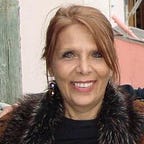The Structure of Language and The Circular Theory
Circle as a noun. Circle as a verb. Circle as a subject, and, an object. Metaphor.
Visualize the diagram of a sentence. Lines and intersections. The line, no matter what it’s used for (and it’s used for everything), is always diameter, and circumference of a circle. So you can see the hidden circle around each diagram (and around each word within the diagram).
This means the conservation of a circle is the core dynamic in nature (responsible for everything). There is a circular relationship between any X and-or Y (any subject and-or object).
So start by visualizing all of the objects all around you. They are joined to each other by an intervening circle (because the line between any X and Y is diameter and circumference). This turns all of the objects (including you) (and me) into circles. So, that’s step one.
Now visualize a circle as a noun. Circle as a verb. Circle as a subject. Circle as an object. Circle as a conjunction. Circle as a preposition. Circle as an adjective. Circle as an adverb. Circle as a tense. Circle as an interjection. Circle as a period, a comma, an exclamation point. A question mark. Parentheses.
So, that’s it now. You’ve clarified the (conservation of) a circle (it has clarified the conservation of you!) (and me). This is how simple it is to understand the integral role a circle plays in nature. Nature is a metaphor for circle, and circle is a metaphor for nature.
Conservation of the circle is the core dynamic in Nature.
